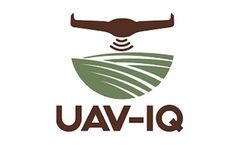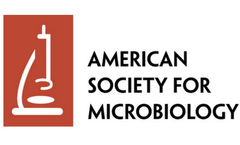Insect Control Articles & Analysis: Older
20 articles found
Japonilure, a synthetic pheromone based on the natural compound found in the bark of certain plants, has been found to be highly effective in attracting a wide range of insect species. Studies have shown that Japonilure acts as a powerful attractant, drawing insects towards traps or other control devices. This targeted approach to ...
Pheromones are natural chemicals produced by different organisms, including insects, which are used for communication purposes. Insect pheromones are highly specific and have been successfully used to control pest populations, monitor insect activity, and enhance mating in agricultural crops. ...
Introduction of Pheromone Solid-phase Synthesis Pheromones are a fascinating class of molecules that are used by many organisms, including insects and mammals, to communicate with one another. They are chemical signals that convey information about an individual's identity, reproductive status, and location, among other things. ...
Hey there, fellow cannabis grower! We know how passionate you are about cultivating healthy plants, which is why we’re here to help you tackle a common problem: powdery mildew. In this guide, we’ll walk you through everything you need to know about dealing with powdery mildew on your precious cannabis plants. By the end, you’ll feel empowered to protect your green beauties and ...
Insect screen is also popularly called Mosquito screen or netting, as mosquito is one of the major insects where the screen meshes are used to control. Plastic insect screen is a kind of weatherproof fabric for mosquito and insect control, installed on Plastic or aluminum window frame. Plastic ...
Application of Insect Pheromone in Pest Control Integrated pest management has played an important role in modern agriculture. ...
While augmentative releases of beneficial insects and mites are becoming increasingly popular in vineyards, it is still rare to find a grower in California with over a decade’s worth of experience using augmentative biological control. ...
Chris is working in conventional production, but he’s been using a lot of practices usually associated with organic farming such as the use of cover crops to help build and protect the soil, the release of beneficial insects and implementation of integrated pest management as the primary tool for controlling insect pests. ...
Engineered plants have helped in improved crop yields per acre with insect or pests resistance cultivars via less of utilization of herbicides, pesticides, and water and tilling. Reduced pest damage in transgenic corn can express the genes to control insect or pests at lower levels of mycotoxins (a carcinogen). ...
They are used in plant protection to control harmful insects and also in veterinary medicine. The name literally means “new nicotine-like insecticide” due to the chemical similarity to nicotine. ...
The findings show that combining crop rotation, using virus-free seed, removing plants showing disease symptoms and controlling insect pests is the best way to control MLN. But the control must be done synchronously over large areas because other diseases could repeatedly re-invade from outside the controlled ...
Chlorpyrifos (CPF) is a widely used organophosphorus insecticide for controlling diverse insect pests of crops. In the monogonont rotifer Brachionus koreanus, population growth retardation with the inhibition of lifespan, fecundity, and individual body size of ovigerous females was shown over 10 d in response to CPF exposure. ...
Pesticides are applied to state and local waterways in California to control insects such as mosquitoes, which are known to serve as a vector for West Nile Virus infection of humans. The California State Water Resources Control Board adopted a National Pollutant Discharge Elimination System General Permit to address the discharge of pesticides ...
The success rate of invasive species control programmes is usually inferred from the species identification record. ...
Before the trials they had been plagued with root diseases, mosaic virus and insect attack, control of which required constant use of pesticides and ultraviolet lighting. ...
The lysogenic bacteriophage APSE infects 'Candidatus Hamiltonella defensa,' a facultative endosymbiont of aphids and other sap-feeding insects. This endosymbiont has established a beneficial association with aphids, increasing survivorship following attack by parasitoid wasps. Although APSE and 'Ca. Hamiltonella defensa' are effectively maternally transmitted between aphid generations, ...
The results showed that when compared with bio-insecticides, synthetic insecticides were more effective in controlling major insect pests during chaisim vegetable production and were associated with higher net incomes. ...
The results showed that when compared with bio-insecticides, synthetic insecticides were more effective in controlling major insect pests during chaisim vegetable production and were associated with higher net incomes. ...
In the risk debate over genetically modified (GM) crops, Europe's regulatory delays have often been branded as "political", i.e. not based on science. Yet the US slogan "sound science" tends to conceal value-laden features of safety claims, their weak scientific basis, their normative framing and their socio-political influences. By contrast a "precautionary ...
The foremost current example of this is the incorporation of Bt genes into crop plants for insect control. The toxic properties of Bt endotoxins to both target and nontarget species of many kinds are well known (Betz et al., 2000). ...













